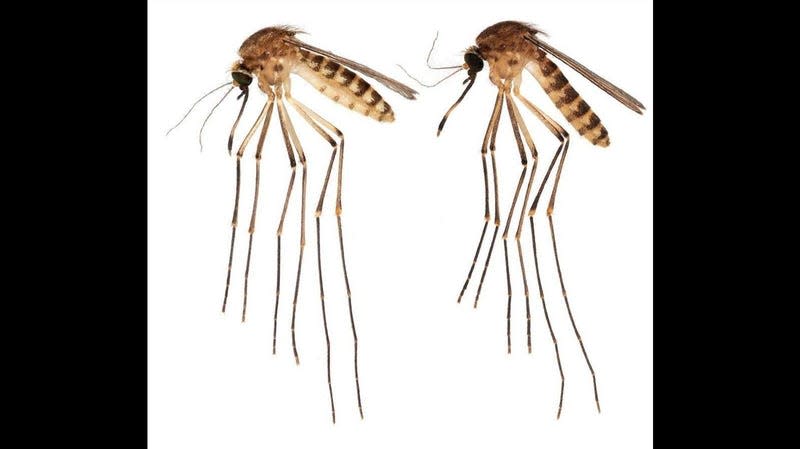Great, Florida Has a New Invasive Mosquito

A new invasive mosquito has moved into Florida, a team of scientists say. In research out this month, they present evidence that the species Culex lactator has established itself in at least three southern counties of the Sunshine State. The exact risk this species poses to humans is unclear, though its relatives are known to spread human diseases like West Nile.
The mosquito was first found by the researchers inside traps laid throughout southern Miami-Dade County in May 2018. Over the next four years, they and others would capture young and adult samples of C. lactator at the same locations. In 2022, the mosquito was found in Collier and Lee counties, which are next to one another, about 100 miles away.
Read more
These Winning Close-Up Photos Show Life That's Often Overlooked
Remembering Enterprise: The Test Shuttle That Never Flew to Space
Physical examination and genetic testing confirmed the identity of the mosquito, the researchers say. If so, it would be the first documented report of this species inside the U.S., as well as the first report of an invasive Culex mosquito belonging to its specific subgenus. And the more recent appearance of C. lactator so far from its original sightings suggests that it’s surviving and possibly extending its range in Florida. The team’s findings were published last week in the Journal of Medical Entomology.
These mosquitoes are native to the tropics of the Americas, but little else is known about them. We don’t know the hosts they normally feed on or if they have the ability to effectively transmit germs that cause human diseases. That said, some Culex mosquitoes are important vectors of West Nile virus, the most common mosquitoborne disease in North America, as well as other diseases like Japanese encephalitis and St. Louis encephalitis. What is clear is that C. lactator is just the latest invasive mosquito to become enamored with Florida.
According to the researchers, as many as 17 nonnative species are thought to have become established in the state, with 11 of these only having been discovered in the past two decades and six discovered within the last five years. These invasions have been aided, at least partly, by a warming climate, which is also allowing some existing disease-carrying pests in the U.S. to expand their range. So even if C. lactator turns out to be a relatively harmless mosquito, it likely won’t be the last tourist to gain a foothold within Florida and the U.S. in the years to come. And one of these invasive mosquitoes could certainly become dangerous to humans, the study authors warn.
“We need to be vigilant for introductions of new mosquito species because each introduction comes with the possibility that the introduced species will facilitate the transmission of a mosquito-transmitted disease,” said lead author Lawrence Reeves, a mosquito biologist at the University of Florida’s Institute of Food and Agricultural Sciences, in a blog post from the university.
More from Gizmodo
Sign up for Gizmodo's Newsletter. For the latest news, Facebook, Twitter and Instagram.

